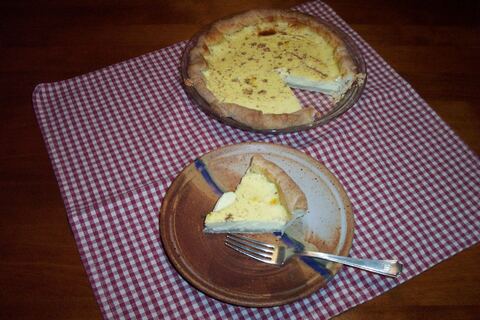
In New England, as in Old England, creams and custard pies were perennial favorites. Creams, sweetened pudding-like mixtures, have pretty much fallen out of fashion now, though we still think they're quite delicious. But why was cooked cream and custard, with or without pie crust, once so popular?
The answer involves the health concerns of early modern diners as much as taste preferences. In a time before pasteurization, many feared that consuming raw milk or cream would lead to sickness, or worse. Andrew Boorde, the sixteenth-century English physician most famous for writing one of the earliest handbooks of medicine, The Breviary of Health, and a companion cooking and health advice volume, A Compendious Regiment or Dyetary of Health (both first published in the 1540s), related that "raw cream undecocted, eaten with strawberries or hurts [bilberries or blueberries], is a rural man's banquet. I have known such banquets hath put men in jeopardy of their lives."[1] His and like sentiments would make cooked creams and custards the norm for centuries among the well-informed.
